Achieving the perfect high-rising boule requires a specialized tool – the proofing basket. In the quest for beautiful sourdough, proofing baskets level up beginner bakers while adding flare for pros through unique basket-weave markings. My post for today explores proofing basket options for sourdough. Proofing baskets build better bread, the perfect springy, Instagramable sourdough.
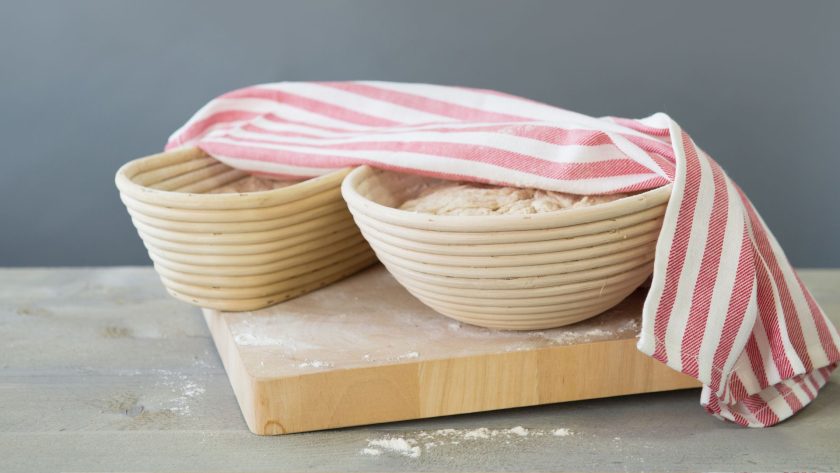
Table of Contents
- What Are Sourdough Proofing Baskets?
- Types of Proofing Baskets for Sourdough Baking
- Materials Used in Proofing Baskets
- Sizes and Shapes of Proofing Baskets
- Liners and Their Importance in Proofing
- Proofing Baskets Maintenance and Care
- Common Mistakes to Avoid When Proofing
- Tips for Choosing Your Sourdough Proofing Basket
- Making Sourdough with Proofing Baskets Elevates Your Baking!
- FAQs
What Are Sourdough Proofing Baskets?
Sourdough proofing baskets, also known as bannetons or brotforms, are a vital tool for artisan bread baking. These specially shaped baskets give sourdough loaves their signature look by providing support and retaining shape as the dough proofs prior to baking.
Using a proofing basket is key for achieving an artisan-style sourdough with a crisp crust and open crumb texture. Proofing baskets provide structure so the dough can properly proof vertically without spreading sideways. The woven interior also allows airflow around the dough, preventing a skin from forming.
Types of Proofing Baskets for Sourdough Baking
Banneton
Bannetons are often made from materials like rattan or wicker and can be lined with linen to prevent the dough from sticking. They are available in various shapes and sizes to suit different bread types.
- Natural Rattan Cane Material - Our banneton bread proofing baskets are made of Indonesian natural rattan cane, which are smooth, no splinter, non-stick, no chemical ordor and not easy to mold. Moreover, they could perfectly wick moisture away from the dough surface and improves the appearance of the bread.
- Two Shapes Proofing Baskets Set - You will get a 10L x 5.7W x 3.5H inches oval proofing basket and a 9L x 9W x 3H inches round banneton basket with washable linen liner to make loaves simultaneously in different shapes. Each basket can hold up to 2 pounds of bread dough.
- Easy To Clean After Using - The smooth surface of the rattan cane allows you to remove any excess flour from inside of the bread baskets easily after using. You can also let the remaining stuck dough dry and take it off by a stiff brush. Use the linen liner for even easier cleaning.
- Easy To Use For Any Recipe - After fully dusting, the dough will easily stay in shape and slip out smoothly onto baking surface. Ideal for any recipe including flour water salt, sourdough and yeast. Suitable for home use bread baking, professional artisan bakers and bread shop.
- Comes With Essential Tools - We have prepared all the necessary tools for you to make beautifu proofing breads include a bread lame to help control the expansion of the bread as it bakes and make beautiful patterns, a dough scraper to manipulate dough and clean surfaces and a silicone basting brush for dusting flo
Prices pulled from the Amazon Product Advertising API on:
Product prices and availability are accurate as of the date/time indicated and are subject to change. Any price and availability information displayed on [relevant Amazon Site(s), as applicable] at the time of purchase will apply to the purchase of this product.
Brotform
Similar to a banneton, a brotform used to shape and support dough during its final rise before baking. Traditionally made of natural materials like cane or wicker, brotforms help in creating a consistent shape and a decorative pattern on the crust of artisan breads.
- Mrs. Anderson’s Oval Brotform Bread-Proofing Basket for supporting, and adding structure to, softer bread dough while it rises (proofs)
- Hand crafted from palmwood rattan from Indonesia with a removable cotton-linen blend liner; measures 9.625 x 6.125 x 3.25-inch
- Coiled texture, along with dusted flour, helps add a beautiful artisan finish to homemade loaves of bread
- Reusable; strong and durable to outlast thousands of uses
- Hand wash basket with hot water only (no soap); wash fabric liner with warm, soapy water; air dry thoroughly between u
Prices pulled from the Amazon Product Advertising API on:
Product prices and availability are accurate as of the date/time indicated and are subject to change. Any price and availability information displayed on [relevant Amazon Site(s), as applicable] at the time of purchase will apply to the purchase of this product.
Banneton vs Brotform
Bannetons and brotforms come in a variety of materials and weave styles. Bannetons traditionally have a tighter weave with sloped sides, designed to shape round boules or batards. Brotforms usually have a more open weave and straight sides suiting square loaves or sandwich style bread.
Brotforms and bannetons are essentially interchangeable. Using a banneton and using a botform aren’t very different at all, as both baskets shape and support dough during its final rise. They can be made of similar materials like wicker or cane and serve the same purpose in bread making. The terms are often used synonymously in the context of artisan bread baking. Both impart markings from the weave, giving a rustic artisan aesthetic.
Other Proofing Options
While proofing baskets produce stunning results, these alternatives offer flexibility and can be handy for home bakers who might not have access to traditional bannetons or brotforms.
- Colander or Bowl with a Linen Towel: A regular kitchen colander or bowl lined with a well-floured linen cloth can work as a makeshift proofing basket.
- Wood Pulp Baskets: These are eco-friendly options made from compressed wood pulp, offering a similar structure to traditional proofing baskets.
- Plastic Proofing Baskets: Durable and easy to clean, plastic baskets can be used, though they might not provide the same traditional pattern as wicker baskets.
- DIY Proofing Baskets: Crafty bakers sometimes create their own proofing baskets using materials like cloth-lined bamboo steamers or even handmade coiled rope baskets.
- Terracotta or Clay Bakers: Some bakers use terracotta or clay vessels, which can provide an excellent humid environment for the dough.
Experimenting with different basket shapes and materials is half the fun!
Materials Used in Proofing Baskets
When selecting a proofing basket, consider what material best suits your baking needs and personal preferences.
The most common materials used are natural fibers like rattan, bamboo, sea grass or wood pulp. Synthetic materials like plastic are also options.
Factors to Consider
When deciding materials, bakers should think about usage frequency, storage space and eco-impact along with cost.
Those baking daily may want durable rattan while occasional bakers could choose plastic. Eco-conscious bakers may prefer renewable wood pulp over plastic. Shape and weave style also affect the final design, not just materials.
Finding the ideal proofing vessel requires weighing personal priorities.
Traditional Rattan and Wicker
Rattan and wicker baskets have traditionally been used for proofing artisan breads. Originating as coiled cylindrical containers, these tightly woven baskets are sturdy, provide airflow, and leave a rustic imprint. However the natural material can be more delicate.
- High-Quality Materials: Made from natural rattan, SnailDigit 8.5-inch banneton baskets ensure excellent breathability and moisture absorption, promoting a crispy crust for artisan bread. The sourdough baskets are free from harmful chemicals, making them safe for you and your family.
- Linen Cloth Liner: Includes 2 natural linen cloth liners to prevent dough from sticking to the proofing basket and make cleaning easy. The liners are reusable and machine washable.
- Easy to Use & Clean: Ideal for various dough types, such as sourdough, French baguettes, and whole wheat bread. The dough naturally forms beautiful spiral patterns during the dough-proofing process. Simply brush off excess flour after each use and hand wash the liners as needed.
- Perfect Gift Idea: Our 8.5in Banneton Proofing Baskets Set is an ideal gift for baking enthusiasts, friends, and family. Encourage their passion for bread making by providing them with a high-quality tool that will elevate their creations.
- If you encounter any issues or have questions, our customer support team is here to he
Prices pulled from the Amazon Product Advertising API on:
Product prices and availability are accurate as of the date/time indicated and are subject to change. Any price and availability information displayed on [relevant Amazon Site(s), as applicable] at the time of purchase will apply to the purchase of this product.
Sustainable Wood Pulp
An eco-friendly alternative, wood pulp baskets are made by compressing renewable wood fibers with non-toxic binders. They have similar durability to traditional materials but tend to be lighter. The mouldable wood pulp can form modern shapes beyond traditional coiling. An excellent option for the sustainability-minded baker.
Plastic Proofing Baskets
Plastic offers affordability and convenience that may appeal to amateur bakers. Plastic proofing baskets are inexpensive, lightweight and easy to clean. Some are collapsible for compact storage. The synthetic material means these baskets lack the artisan charm of natural rattan but provide reliable functionality.
- For the Ultimate Loaf of Bread: Our plastic sourdough banneton basket comes in a generous 9-inch size so theres always enough room for your dough to rise and shape beautifully.
- Safe and Sustainable: Crafted from food-grade plastic that is completely free from harmful BPA or other chemicals, our banneton proofing basket allows you to bake delicious and healthy loaves. The basket is easy to clean and reusable, making it a sustainable option for your baking habits.
- Large Capacity: This banneton bread proofing basket can hold anywhere between 1.5lbs and 2.2lbs of dough, allowing you to experiment with different bread recipes. The beautiful bottom pattern is great for rustic bread with a thick crust.
- Better Dough Rising: Our bread bowls for rising and baking are designed with over 70 vents that strategically enhance air circulation. This allows the dough to breathe and rise evenly without drying out for an amazing result.
- Easy to Use: These proofing bowls for sourdough bread are dishwasher-safe for easy cleaning, while their smooth, non-stick surface ensures dough doesnt stick. Its also sturdy and built to last through countless baking sessions, making it a durable choice for home bakers and professionals ali
Prices pulled from the Amazon Product Advertising API on:
Product prices and availability are accurate as of the date/time indicated and are subject to change. Any price and availability information displayed on [relevant Amazon Site(s), as applicable] at the time of purchase will apply to the purchase of this product.
Sizes and Shapes of Proofing Baskets
Proofing baskets come in a variety of sizes and shapes to accommodate different loaf styles. Choosing the right size and shape impacts the final form of the bread.
When deciding size and shape, sourdough bakers should consider desired loaf style, baking vessel constraints, and oven capacity. A diversity of basket shapes empowers creativity.
Round Baskets
Round bannetons are the most common style. Their sloped sides shape dough into rounds like boules or batards. A standard 9-10 inch round basket suits a medium boule while larger 12+ inch sizes accommodate bigger loaves. Miniature bannetons as small as 4 inches across are also available for making individual rolls and smaller loaves.
Oval Baskets
An oval basket will yield oblong loaves like bâtards. An oval shape can give more height for greater oven spring versus round baskets. Oval bannetons come in varying lengths – shorter ones for stubby fendus up to 16 inches long for dramatically elongated loaves.
Square Baskets
Square brotforms allow shaping sandwich, tin and pullman loaves. The straight sides give structure for a square form factor. These basket sizes correlate to common bread pan dimensions, usually ranging from 4 x 4 inches up to 9 x 5 inches.
Custom Shapes
Some artisan bakers utilize custom proofing baskets in eccentric forms like hearts, leaves or rings yielding inventive loaf shapes and silhouettes. Turning out such whimsical breads requires careful proofing but delivers visual intrigue.
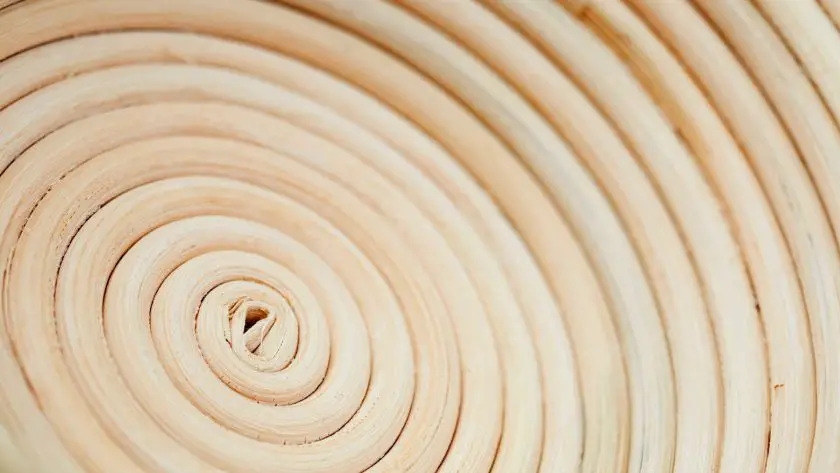
Liners and Their Importance in Proofing
Don’t want your dough stuck? Liners are the solution when baking bread.
While optional, liners undeniably make the proofing process simpler for most home bakers. They make for even easier cleanup and loaf shaping.
Cloth Liners
Linen or cotton canvas cloths are commonly used to line proofing baskets before adding dough. An inner cloth helps prevent sticking to the woven interior and absorbs excess moisture. Flouring the liner allows easy release. Linen imparts an artisan rusticity while still aiding cleanup.
- You will receive: one package includes 6 pieces of bread banneton proofing basket cloth liner in 2 shape, each shape has 3 pieces, sufficient quantity for satisfying your various baking demands, enough for your use, replacing and sharing; Color: as pictures shown
- Size information: we offer 2 shapes of natural rattan baking dough baskets cover for your choices, round and oval, enough for meeting your different demands
- Durable and soft: the brotform proofing cloth liners are made of untreated flax linen and fabric, quality material with good workmanship, smooth surface and nice texture, durable and soft, has no dye or harmful substance, safe for your use, can accompany you a long time
- Baking supplies: nice partner with bread proofing basket (not included), just place the kneaded dough into the proofing basket (not included) and then cover the proofing basket cloth liner, once it has sufficiently risen, unmold the loaf and transfer it onto a baking sheet; Note: only come with the proofing basket cloth liner
- Where to use: the basket cover works well at proofing and absorbing the moisture from the dough for crispy round crust, help to make bread, banneton or brotform and more, enjoy the process and bring you more convenie
Prices pulled from the Amazon Product Advertising API on:
Product prices and availability are accurate as of the date/time indicated and are subject to change. Any price and availability information displayed on [relevant Amazon Site(s), as applicable] at the time of purchase will apply to the purchase of this product.
Disposable Liners
Some bakers employ disposable options like parchment paper or plastic wrap to minimize cleaning. These can adapt containers lacking cloth liners into impromptu proofing baskets. However disposable liners won’t absorb moisture like linen and tend to conform less to the basket’s shape.
Getting Creative
Beyond lining baskets, creative bakers also utilize liners to craft free-form shapes by lining bowls or colanders. Shaping dough in a linen-lined vessel allows custom silhouettes from round to oblong when inverted onto a sheet pan. Liners increase flexibility.
Proofing Baskets Maintenance and Care
Taking care of your proofing tools properly helps them last for many loaves. With some basic maintenance, bannetons and brotforms will provide years of service crafting artisan breads, saving you money not just in buying bread but in purchasing equipment, too!
Cleaning Baskets
After use, gently brush excess flour out of the basket’s weave using a soft brush. Avoid abrasive scouring pads which can damage the fibers. If needed, wipe with a barely damp cloth then allow to fully air dry before storing or reusing to prevent moisture damage over time.
For linens, wash cloth liners separately from other laundry using mild detergent, never hot water. Line dry linens rather than machine drying to preserve their shape and lifespan.
Storing Baskets
To prevent damage, proofing baskets are best stored hanging or set on a shelf where air can circulate. Prolonged condensation from moisture can encourage mold growth in baskets.
Those with limited space can carefully nest baskets inside each other on their sides if the weaves allow. Just be cautious sliding them to prevent snagging. Collapsing plastic baskets helps compact them.
Signs of Wear
With heavy use, even well-made bannetons will eventually show some fraying around the rim. As long as the main structure remains intact, these can still perform fine. Just take care not to snag loaves on any loose bits.
Common Mistakes to Avoid When Proofing
While proofing baskets yield beautiful loaves, bakers can run into issues like sticking or shape distortion without proper technique. Avoiding some common pitfalls helps ensure proofing success.
Preventing Sticking
Sticking frustrates when inverted dough won’t release from the basket, tearing the sides. Ensure the interior and any liner is generously floured before adding dough. Sticking generally occurs when there isn’t enough flour or the dough overproofs, spreading too much.
Maintaining Shape
Getting misshapen flattened or lopsided loaves means the dough likely wasn’t strong enough to hold structure while proofing vertically. Developing adequate gluten strength and proofing just until dough retains shape without spreading flat enables the basket to support form.
Proofing Only Partially
While underproofing causes dough to spring back when unmolded, overproofing leads to spreading. Learning the perfect proof where dough gently retains the basket’s shape takes practice. Denting the surface with a floured finger won’t leave a lasting mark when ready.
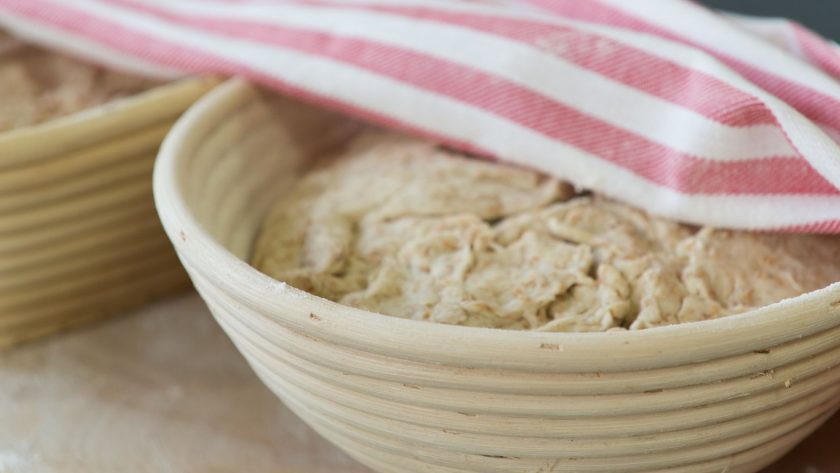
Tips for Choosing Your Sourdough Proofing Basket
- Material: Wicker and cane are traditional and offer a classic look and feel, but wood pulp and plastic are easier to clean and maintain.
- Size and Shape: Match the basket size and shape to the type of bread you plan to bake. Round baskets are great for boules, while oval or long baskets suit batards or longer loaves.
- Quality: Look for well-constructed baskets that won’t unravel or splinter. A smooth, fine texture helps in releasing the dough more easily.
- Lining: Decide if you want a lined or unlined basket. Linen-lined baskets prevent the proofed dough from sticking and can impart a smooth surface, while unlined baskets leave a pretty spiral imprint.
- Ease of Cleaning: Ensure the basket can be cleaned easily to maintain hygiene. Some materials may require more care to prevent mold and odors.
- Durability: Consider how often you’ll be using it and choose a durable material if you bake frequently.
- Breathability: The basket should allow air circulation for the dough’s surface to dry slightly, which helps in forming a good crust.
- Price: Consider your budget. Remember, more expensive doesn’t always mean better quality.
Making Sourdough with Proofing Baskets Elevates Your Baking!
Sourdough proofing baskets are vital tools for any artisan bread baker looking to craft professional quality loaves. Proofing baskets provide essential support, shape, and airflow to elevate humble dough into bakery-worthy boules and batards.
While perfection takes practice, a quality proofing basket simplifies the pursuit. Little tricks like generous flouring, steam and scoring make all the difference for picturesque oven spring.
A great proofing basket provides a vessel for transformation – from humble lump of dough to temptation on a bakery shelf. The right basket unlocks every baker’s potential to manifest Michelin-level magic at home, launching lofty your sourdough loaf to soar.
What’s your favorite proofing basket?
FAQs
What is the best proofing basket for sourdough?
The best proofing baskets for sourdough are ones made of durable woven natural materials like rattan or wicker, with sloped sides shaped specifically for the type of loaf you want to bake. A banneton is ideal for round boules, while an oval banneton or brotform can suit oblong batards or square sandwich loaves.
What can I use as a sourdough proofing basket?
Various household items can work in a pinch. Options include a bowl, colander, or bamboo steamer lined with a linen towel or cloth that has been generously floured to prevent sticking. You can also improvise a basket shape with a flour-dusted plastic bowl lined with parchment paper or a clean pillowcase. The key is finding a vessel to support the dough retaining its shape during final proofing before baking.
Do I need a proofing basket for sourdough?
A proofing basket can take your sourdough to the next level. The basket shape enables a vertical rise, allowing an airy internal crumb. The woven basket also leaves an attractive spiral marking on the crust, screams artisan bakery. Improvised vessels work but high quality bannetons, made of natural rattan or wood pulp, give a superior rise and look for boules, batards, and sandwich loaves. For serious sourdough bakers, a proofing basket is a worthwhile investment.






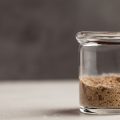
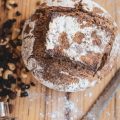
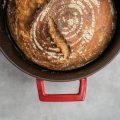

![How To Use A Banneton: Learning Proofing Basics 13 How to use a banneton [easy to follow guide]](https://www.mydailysourdoughbread.com/wp-content/uploads/2023/01/How-to-Use-a-Banneton-120x120.jpg)
